|
| REPLICATING A COMPLEX PART |
| Author |
Message |
    
Robert B. Price
Senior Member
Username: rbprice
Post Number: 242
Registered: 11-2001

| | Posted on Friday, May 08, 2009 - 08:22 pm: | 




|
The die casting that held the distributor on a Niagara Special four cylinder engine was badly and irreparably damaged. The following
is how it was replicated.
First, with some considerable difficulty,
I got the old part off the back of the
generator. It was stuck on the outer
race of the rear bearing, and, as you
can see, it was a fragile zinc die
casting that got broken up in the process.
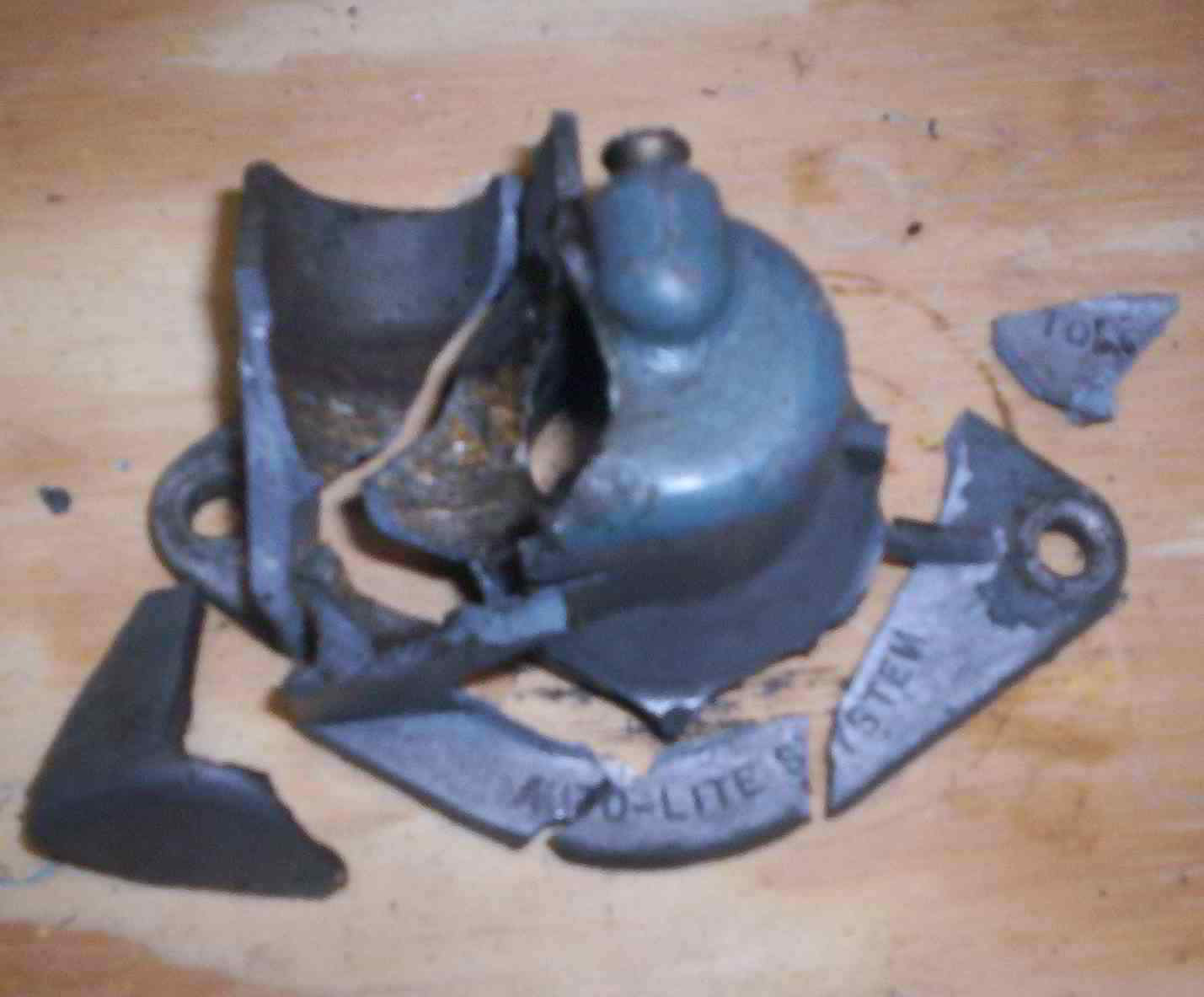
I glued the parts back together and got the measurements off of it and the generator.
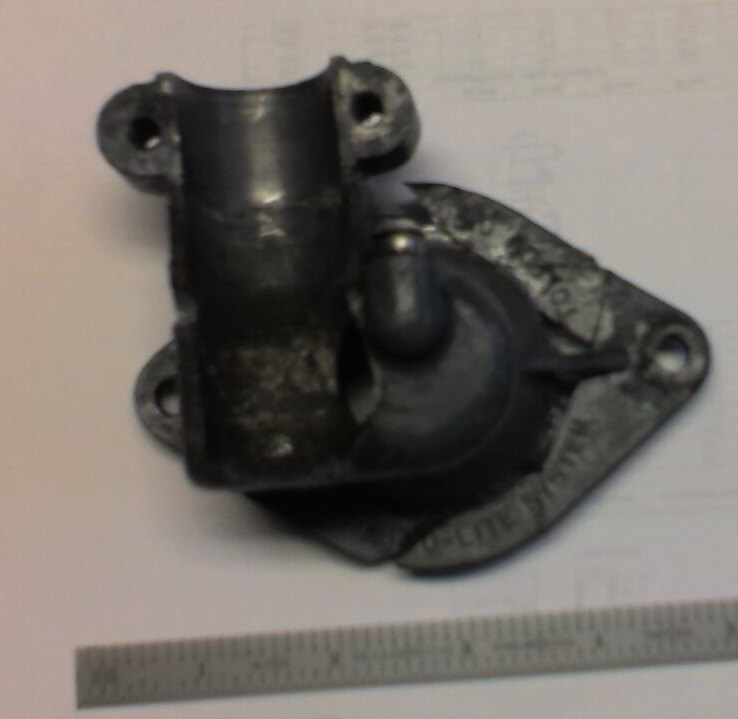
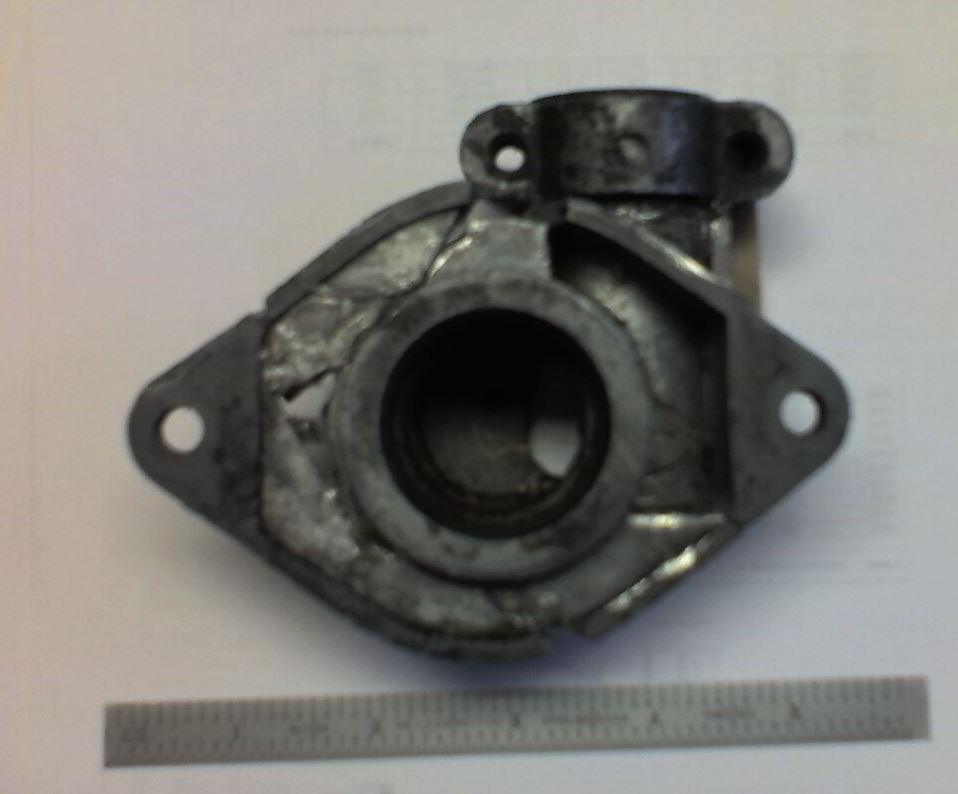
Then I created a 3D solid model in AutoCAD from the part and sent that off to a company that makes Rapid Prototype parts.
They converted the CAD file into a part
made from a polymer alloy of nylon and
carbon fiber that has about half the
strength of an aluminum casting and is
much stronger than the zinc die casting
and is not at all prone to cracking.
Since this is a non-structural part and
doesn't get too hot in use the RP polymer
is well suited to the application.
And here is the RP part with the distributor mounted on the generator. Note that I re-used the
outer half of the original clamp which is a die
casting. The cap is a NOS item found on eBay.
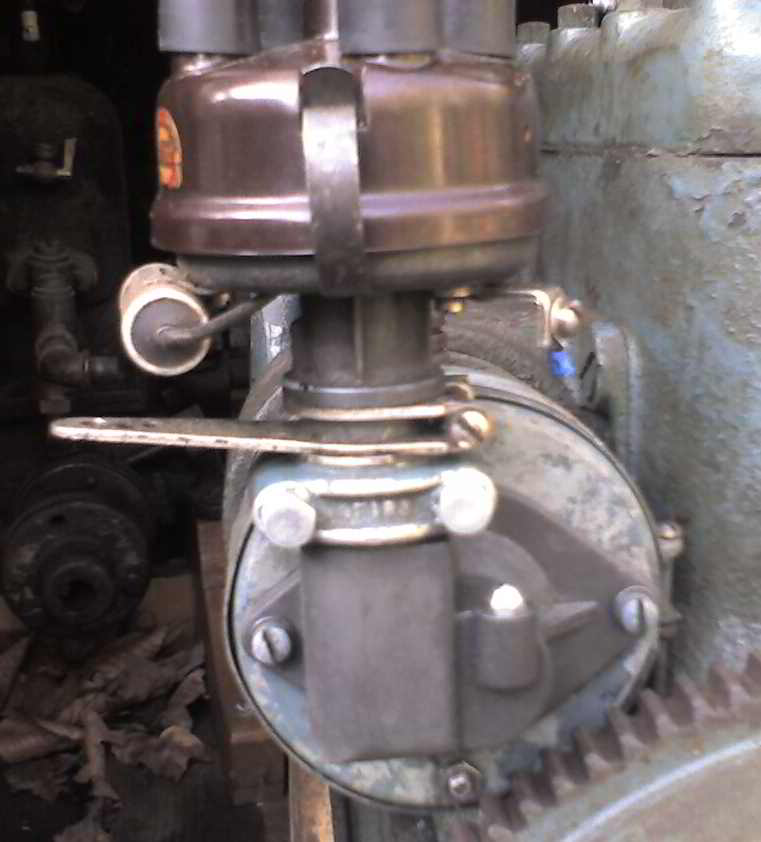
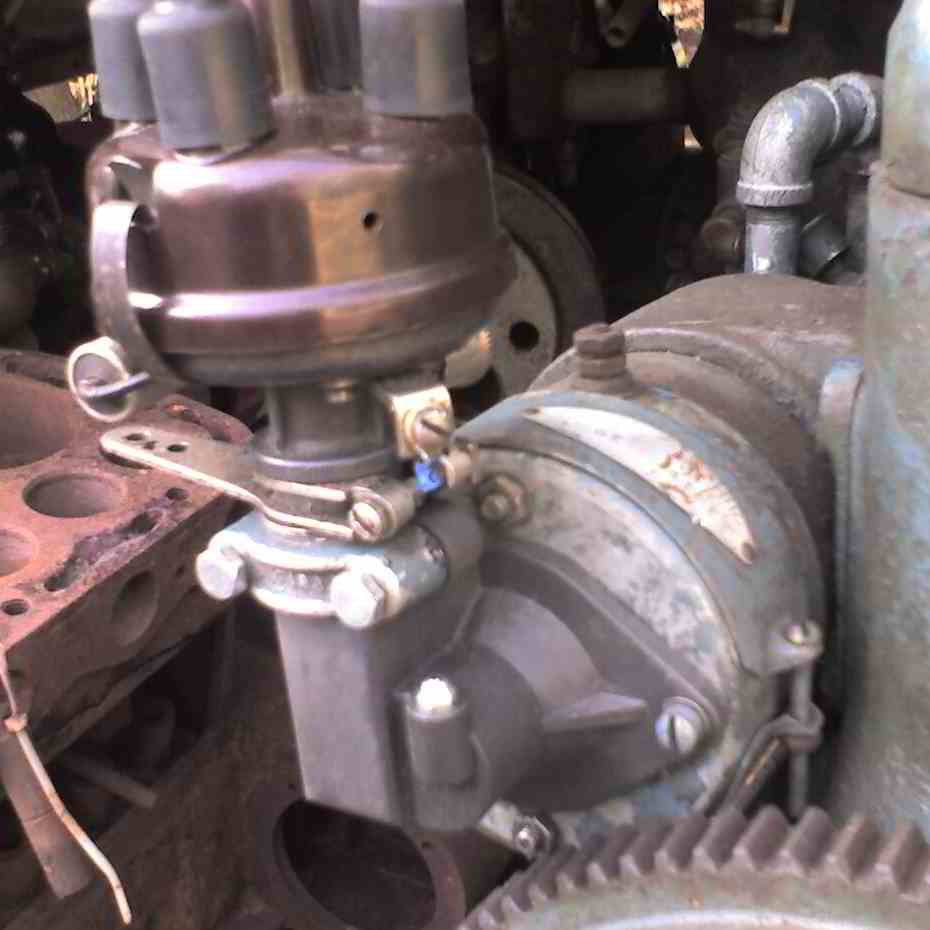
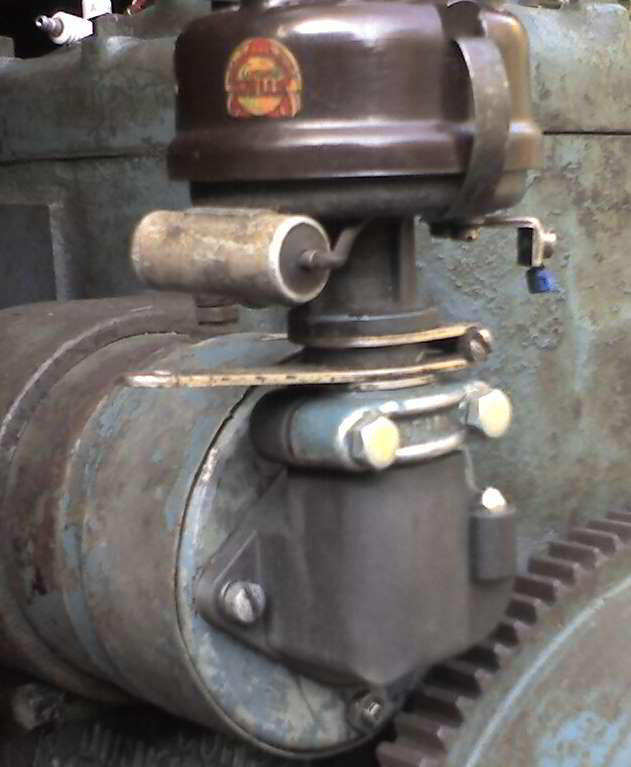
The cost of the part was $375 including the machining of the bore for the bearing and the stalk of the distributor and the shipping. I did get a budgetary quotation to have the part hogged out of a block of aluminum but that was in the $1,300 range. And I could have used the RP part, with a much less costly material than the carbon fiber nylon to create a casting but that would have required some core pieces plus lots of machining.
So, if you have a part that can't be found and would work with this or a similar material, I can create a solid model for you at a very reasonable cost and help you find a vendor that can make the RP part. Or if it does have to be a casting, use the RP part as a pattern.
Bob Price
These pictures got out of sequence and I couldn't figure out how to fix them.
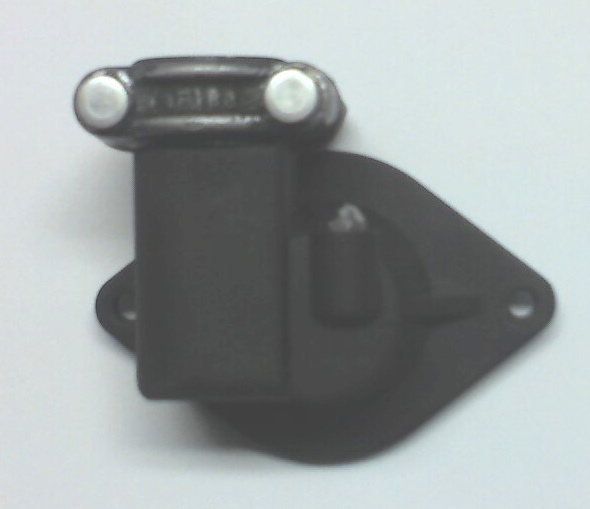
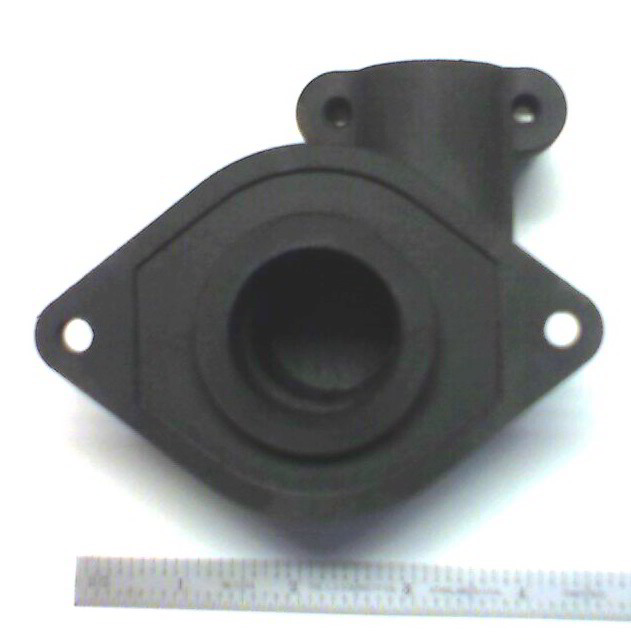
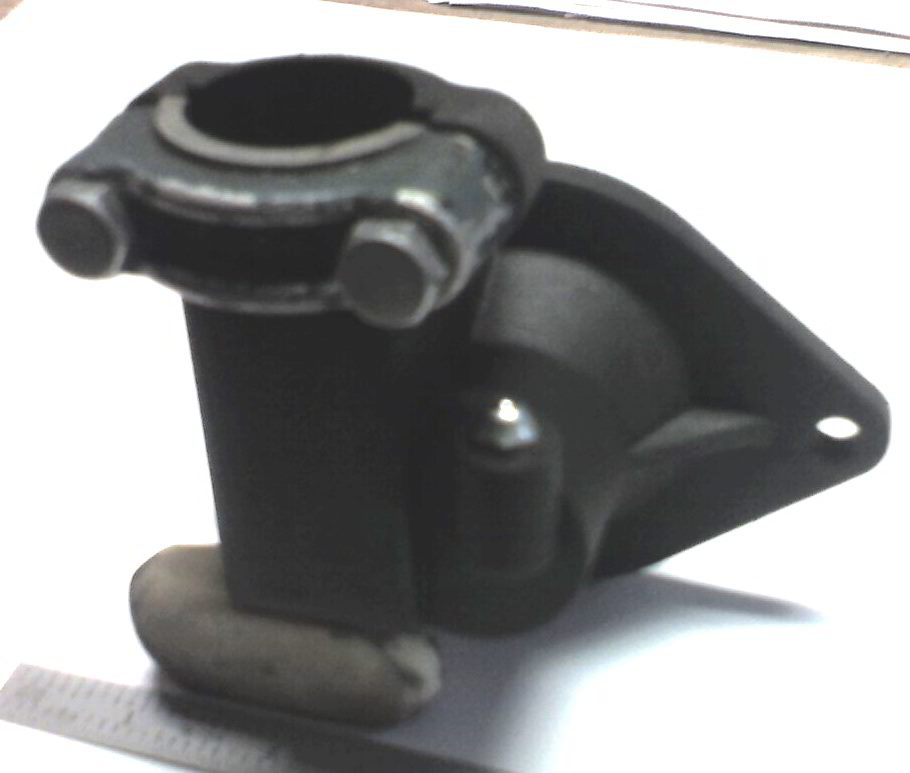 |
    
RichardDurgee
Senior Member
Username: richarddurgee
Post Number: 2092
Registered: 11-2001
| | Posted on Saturday, May 09, 2009 - 05:46 pm: | 




|
*
R.B.
Cool process - Thanks for the posting ! |
    
Robert B. Price
Senior Member
Username: rbprice
Post Number: 243
Registered: 11-2001

| | Posted on Monday, May 11, 2009 - 07:25 am: | 




|
Here is what the 3D CAD model looked like.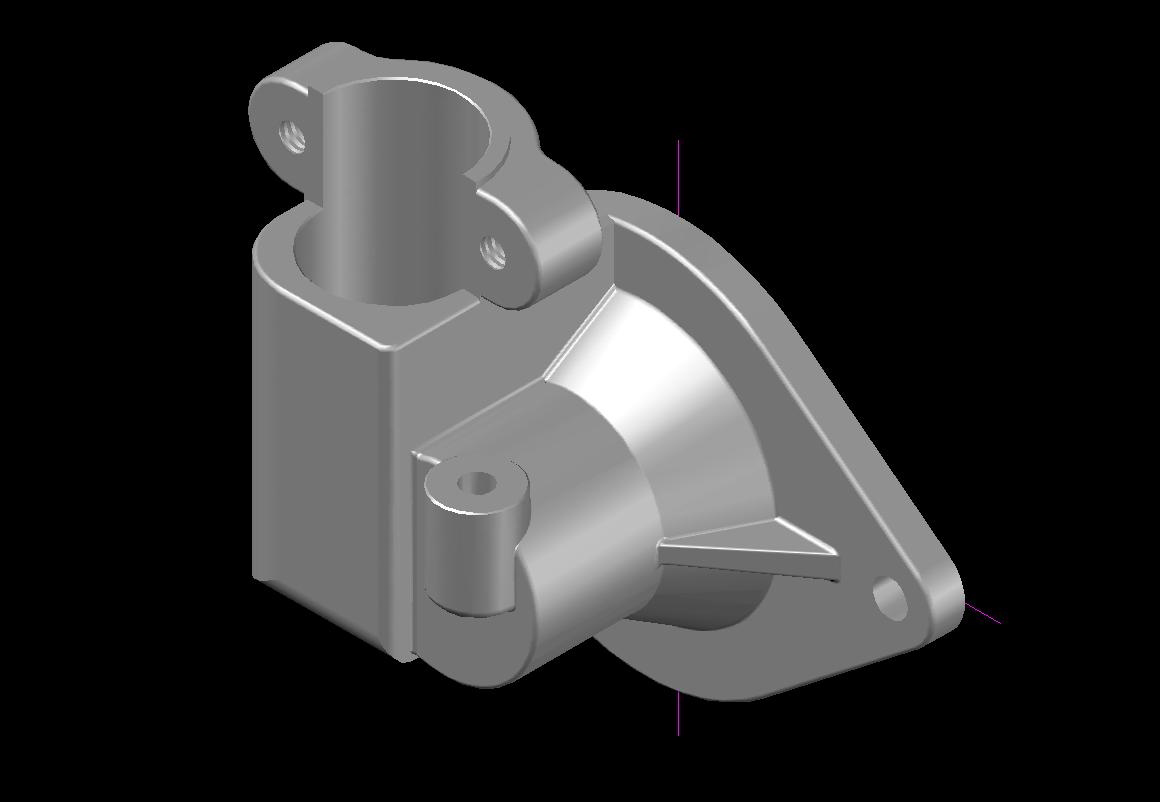
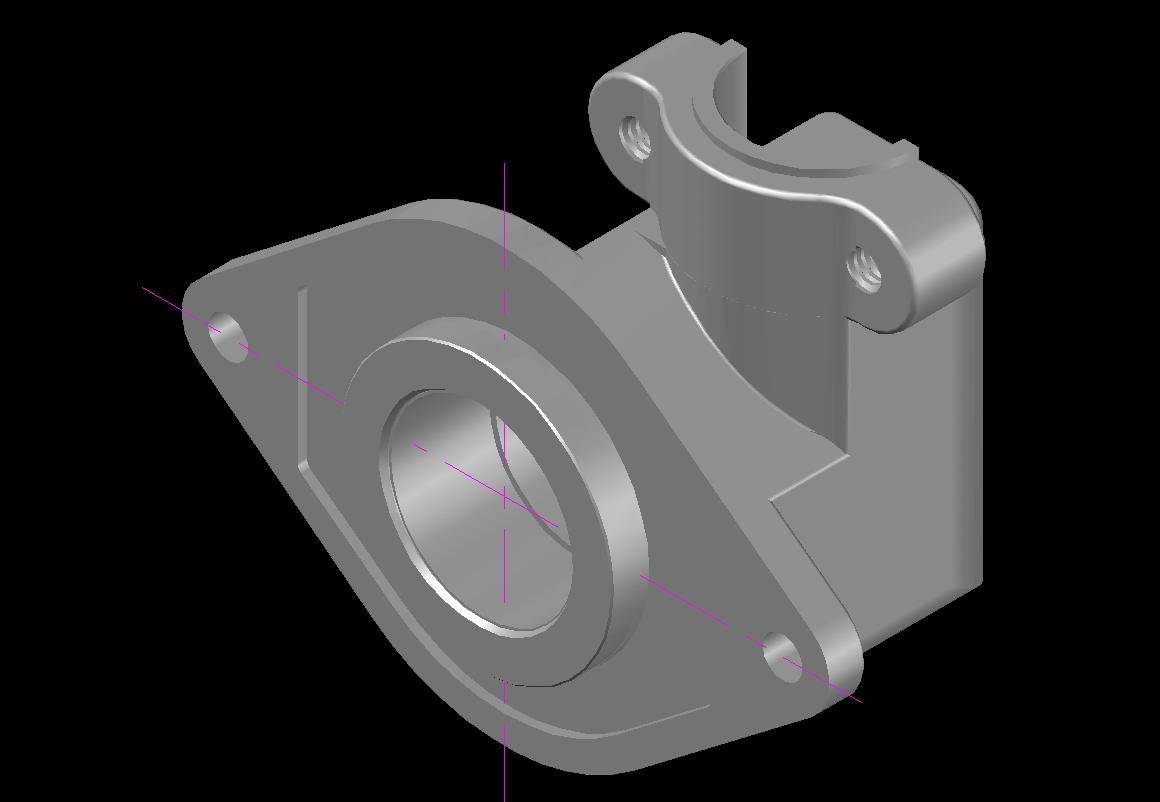 |
    
miro forest
Senior Member
Username: miro
Post Number: 375
Registered: 11-2001

| | Posted on Tuesday, May 12, 2009 - 09:56 am: | 




|
That's gotta be a really great process - how accurate does the original part have to be?
Yours looked like it was a real mess.
I take it that the material does not conduct electricity so it might be necessary to make external connections in some cases.
miro |
    
Robert B. Price
Senior Member
Username: rbprice
Post Number: 244
Registered: 11-2001

| | Posted on Tuesday, May 12, 2009 - 11:35 am: | 




|
Typical tolerances for RP parts are +/_ 0.004 to .005 inches depending on the overall size of the parts. That is why I had to have the two internal bores sized after the part was made. I suspect the nylon/carbon fiber is slightly conductive but most of the other materials are not. There is a process that makes parts from powdered metal and those would be conductive but much more expensive.
Bob |
|
|
|


|


